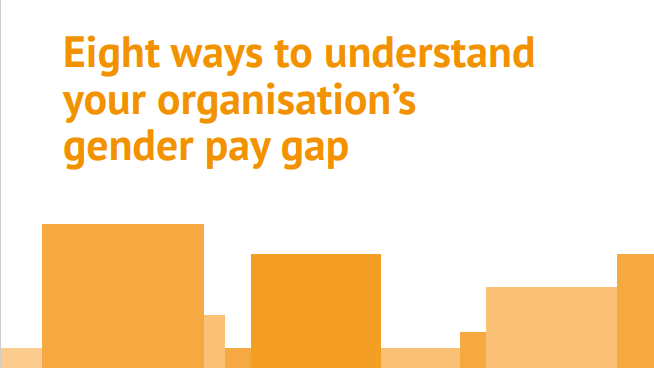Having clear and transparent processes for reward means they are more likely to be structured, followed more consistently and auditable. Being able to audit processes enables organisations to better understand potential inequities.
Employer recommendations
➖'Introduce transparency to promotion, pay and reward processes' and 'Encourage salary negotiation by showing salary ranges' are listed as 'Effective Actions' in the Govt. 'Actions to close the gender pay gap report'
➖Publish criteria/process for the decision making so managers make evidence-based decisions and can be held to account and so that employees are clear on “how things are done”. Include the criteria for making salary decisions, who makes these decisions and the steps or processes used to arrive at a decision.
➖CIPD recommends employers aim to voluntarily compile ethnicity pay reports as part of their organisation’s approach to improve inclusion and tackle inequality in the workplace. The CIPD has created a guide to ethnicity pay gap reporting which you can find here.
➖Government Equalities Office and The Behavioural Insights Team have produced a guide to help employers better understand their gender pay gap:

➖Read what Shell, a consistent Times Top 50 Employer for Women, are doing to ensure they have globally consistent pay and reward policies in their Signatory Spotlight.
Gillian Unsworth, Head of Gender Pay Gap Reporting at the Government Equalities Office (GEO) says “Mandatory unconscious bias training can actually be bad for closing the gender pay gap. A lot of people can go to a session and think that they’ve sorted it and don’t need to worry about it anymore. Or, even worse, they think it’s not their fault,” she said. Instead, employers should focus on being as transparent as possible about pay and talk to employees to better understand the issues at hand. The more info you can put into job adverts, for instance, will really help.
➖**Encourage salary negotiation by showing salary ranges: '**Women are less likely to negotiate their pay. This is partly because women are put off if they are not sure about what a reasonable offer is. Employers should clearly communicate the salary range on offer for a role to encourage women to negotiate their salary. This helps the applicant know what they can reasonably expect.
➖If the salary for a role is negotiable, employers should state this clearly as this can also encourage women to negotiate. If women negotiate their salaries more, they will end up with salaries that more closely match the salaries of men' Govt. 'Actions to close the gender pay gap report'
💡 HSBC revealed in their 2019 gender pay report that they updated 'reward practices to increase transparency and consistency. We have introduced more structured variable pay arrangements for junior roles. This focuses on objective criteria, enabling more consistent and equitable pay outcomes. We will continue to conduct robust reviews and monitor pay data to reduce the risk of any bias impacting our processes. If pay differences are identified that are not due to an objective, tangible reason such as performance or skills and experience, we make adjustments'.
💡 Research conducted by Emilio J. Castilla, NTU Professor of Management at the MIT Sloan School of Management: 'The solution was to adopt a set of organizational procedures that incorporated both accountability and transparency into the company’s performance reward system. The intervention consisted of introducing three key changes to the existing system. First, a performance reward committee was appointed to monitor reward decisions. The committee, consisting of members of the company who were recruited from different divisions, including at least one HR professional, one executive, and a new full-time staff member in charge of compiling (coding and analysing) data on employee compensation, would be responsible for assessing the fairness of pay decisions. Second, all senior managers had to follow a formalised process for assigning rewards based on employee evaluations. This process required the senior managers to briefly justify how much was awarded to each employee in their work unit. Third, the performance reward committee was granted the authority to modify pay decisions made by senior managers', 'Achieving Meritocracy in the Workplace', MIT Sloan Management Review.
➖In his study of one company’s merit-based pay system, Castilla found that simply providing senior managers with data on how their pay decisions compared to others helped managers hold themselves accountable and reduce pay disparities by gender, race, and birth nationality. Have a formal process for selecting employees for promotion to increase fairness and transparency for all employees and specifically to those who lack a strong network across the organisation.

Further information
- Report: Pay Gaps at Work 2022 Summary, D&I Leaders
- Article: An employer’s guide to equal pay auditing, People Management Magazine
- Guide: Actions to close the gap, GOV.UK
- Guide: Ethnicity pay gap reporting: Why it matters and how to execute it, Mind The Gap
- Guide: Ethnicity pay reporting: A guide for UK employers, CIPD
- Guide: Ethnicity pay reporting: guidance for employers, Gov.uk
- Report: Attrition in tech - Why women leave tech jobs and careers, Tech Talent Charter

-1.png?width=688&name=TTC%20TRANSPARENT%20TALENT%20%26%20REWARD%20PROCESSES%20(1)-1.png)